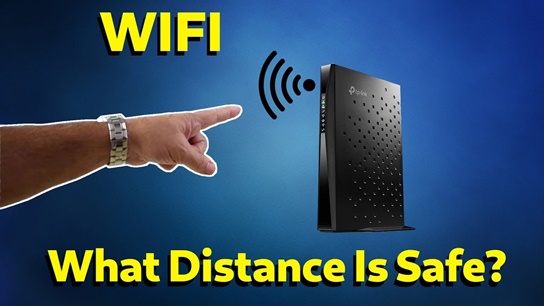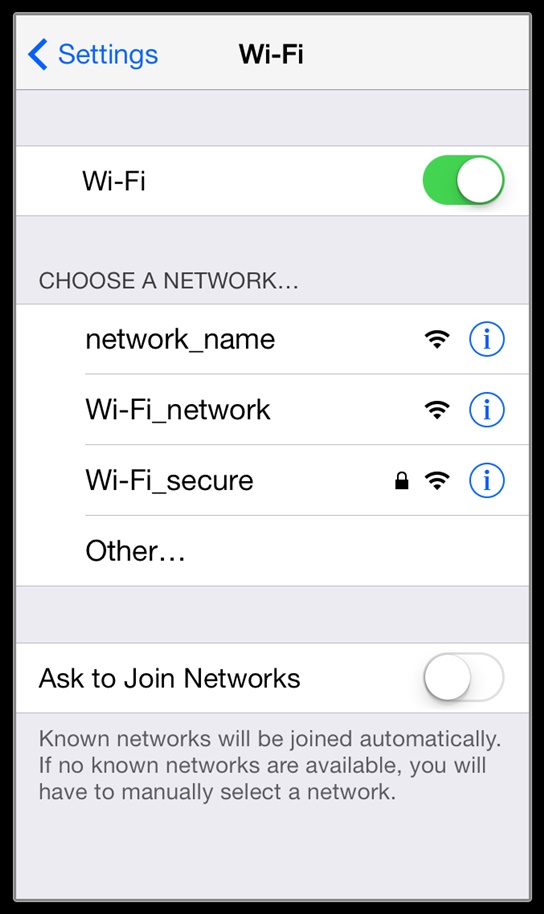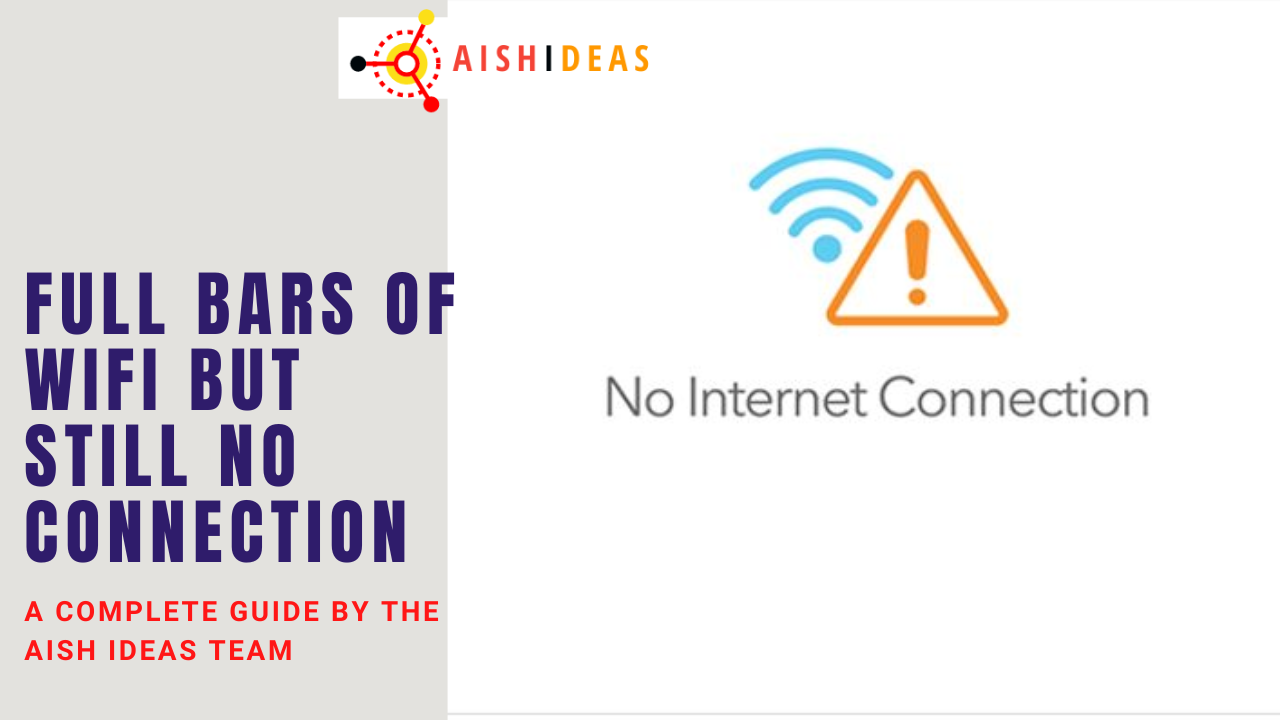A common problem among smartphone users is having Full Bars of WiFi But Still No Connection. There could be a few reasons why you might have full bars of WiFi but still no connection. Perhaps your router is old or maybe it’s not positioned in a good spot.
Maybe your phone or computer isn’t equipped with the latest and greatest WiFi hardware. In any case, if you’re unable to get online, there are a few things you can do to troubleshoot the problem and hopefully get connected.
If you’ve been experiencing problems connecting to the internet, you may be wondering what could be causing it. It could be problems with the router, your computer, or even your network.
Contents
Causes of Full Bars of WiFi But Still No Connection
In today’s society, WiFi has become a necessity in order to maintain a successful lifestyle. Whether it is for business or personal reasons, having WiFi allows people to stay connected with the world. However, there are times when people experience Full Bars of WiFi But Still No Connection. There could be many causes for this problem, but some of the most common ones will discuss below.
1. Distance From The Router
I have Full Bars of WiFi But Still No Connection. Distance from the router is the number one reason for a weak or no WiFi signal. The further away from the router, you are, the weaker the signal will be. This is due to the fact that WiFi signals travel in a straight line and cannot penetrate walls or other obstacles as well as wired signals can.

There are a few things you can do to boost your WiFi signal and increase your distance from the router. Make sure that your router is in an open area and not in a corner or against a wall. Try to keep your devices within range of the router. Invest in an Xfinity WiFi extender or booster to amplify the signal in areas of your home that have poor coverage.
2. Obstruction By Physical Objects
Obstruction by physical objects is the cause of Full Bars of WiFi But Still No Connection. Many people have experienced this issue where they are getting a full WiFi signal but cannot connect to the internet.
Another reason for this issue could be something as simple as a cord plugged into an outlet near where you’re trying to get a signal. Cords create electrical interference which can block or weaken the WiFi signal.
There are some things that you can do to try and fix this issue if it’s happening in your home or office. Try moving around to different spots in the room to see if the signal gets stronger or weaker.
3. Interference From Other Electronic Devices
Many people assume that this is a problem with their device or network, but in most cases, the issue is caused by interference from other electronic devices. Interference can come from any electronic device that uses a wireless signal, such as baby monitors, security cameras, and even microwaves.
When these devices are in use, they can cause interference with your wireless network and prevent you from connecting to the internet. The best way to fix this problem is to identify which devices are causing the interference and either move them or disable their wireless signal.
4. Incorrect Network Name or Password Entered
If you’ve been struggling to connect to your WiFi network, but have Full Bars of WiFi But Still No Connection, the problem may be that you’ve entered the incorrect network name or password. This is a common mistake that many people make, and it can be frustrating when you can’t seem to get connected.
The good news is that this is usually an easy fix. All you need to do is check your settings and make sure that you’re entering the correct information. If you’re not sure what the network name or password is, double-check with the person who set up the network for you.
5. Router Settings Need to Be Updated
Your home’s WiFi connection is not as strong as you think it is. You have Full Bars of WiFi But Still No Connection. In fact, it might be because your router settings are not up-to-date. There are many ways to fix this problem, but the easiest way is to call your Internet Service Provider (ISP) and have them walk you through the steps.

They will most likely ask you to reset your router and modem and then update your settings. If that still does not work, they might ask you to switch out your current router for a new one.
6. Bad Router
In the technology world, there are few things more frustrating than not being able to connect to the internet. And for many people, this frustration is only amplified when they’re near a wireless hotspot but still can’t get online.
There are a number of potential explanations for this issue, but one of the most common is that the problem is caused by a bad router. If your router is old or damaged, it may not be sending out a strong enough signal to reach your device. And even if you have a full bar of WiFi signal, if your router isn’t working properly you still won’t be able to get online.
Solutions of Full Bars of WiFi But Still No Connection
There are a few things you can do to try to fix the problem of Full Bars of WiFi But Still No Connection.
1. Reboot Your Device
If your iPhone, iPad, or Mac is having trouble connecting to a Wi-Fi network, even though you can see the network and there are no problems with the signal, you can try to fix the problem by rebooting your device.
Now, reboot your device by holding down the power button until you see the slider. Slide it across to turn off your device. After your device has turned off, hold down the power button again until you see the Apple logo. Once your device has restarted, try connecting to the Wi-Fi network again.
2. Log Out of Your WiFi Connection And Log Back In
Many people are reporting Full Bars of WiFi But Still No Connection. If this is happening to you, there are a few things you can do to try and fix the issue.

The first thing you can do is log out of your WiFi connection and log back in. Sometimes, this is all it takes to fix the problem. If that doesn’t work, you can try restarting your router. Then, wait a few minutes for it to start up again before trying to connect to your WiFi network.
If neither of those solutions works, your last resort is to call your Internet service provider (ISP). They may be able to help identify and fix the issue on their end.
3. Change The Channel Your Router Is Broadcasting on
There are a number of potential solutions to resolving Full Bars of WiFi But Still No Connection. The first solution is to change the channel your router is broadcasting on. If you are in an apartment complex or shared housing situation.
There is a good chance that there are other routers in your vicinity that are also using the same channel as yours. This congestion can lead to decreased speeds and dropped connections. By changing your router’s broadcast channel to one that has less traffic, you may be able to resolve these issues.
If your computer does not have a wireless internet adapter, you may need to purchase an external adapter in order to connect to your network. Not all adapters are created equal, so it may be worth trying out a few different models until you find one that works well for your setup.
4. Move Your Router to a New Location in Your House
If your home is full of people and devices and you’re still not getting a good WiFi signal, you might need to move your router to a new location in your house. Try putting it in a central location where everyone can access it, or near the device, you’re trying to connect to the WiFi. If that’s not possible, try using an extender or repeater to boost the signal in hard-to-reach places.
5. Get A New Router
It’s not uncommon for people to experience Full Bars of WiFi But Still No Connection. One possible solution is to get a new router. Another solution is to change the channel on your router. If you’re using a 5Ghz signal and there are too many networks using that same frequency, it can cause interference and affect your signal strength.
6. Call Your Internet Service Provider
If you are having trouble connecting to the internet, the first step is to check your device’s connection. Make sure that you are connected to the correct network and that your device is not in airplane mode. If you are still having trouble connecting, it is possible that there is a problem with your service provider’s network.

The best way to troubleshoot this problem is to call your service provider. They will be able to help you determine where the issue is and how to fix it. Sometimes, however, the problem may lie with your device and not with your service provider’s network. In this case, the service provider may be able to provide you with some tips on how to fix the problem.
Conclusion
In conclusion, there could be several reasons why you have Full Bars of WiFi But Still No Connection. It is possible that your router is not placed in the best spot, or there is too much interference from other electronic devices.
You may also need to update your router’s firmware or change the channel. By following these tips, you should be able to improve your WiFi signal and connection.
The most common reason is that the device is not connecting to the correct network. Other reasons include a weak signal, outdated software, or a problem with the router. If someone is having problems connecting to the WiFi, they should consult a technician for assistance.

